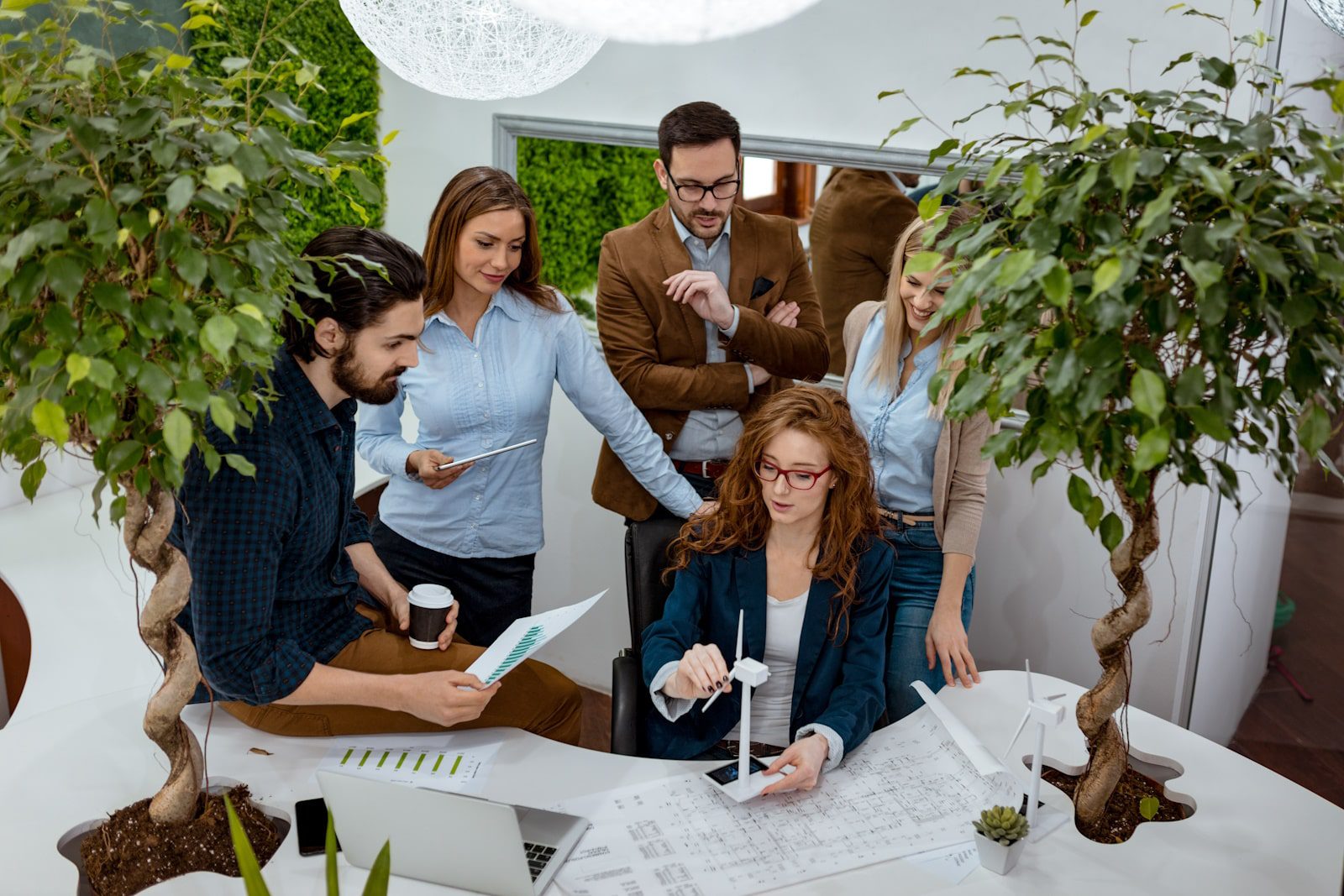
Biophilic Design: The New Standard for Interior Design Companies
In recent years, biophilic design has emerged as more than just a passing trend in the world of interior design. With a growing focus on creating healthier, more sustainable work environments, this approach, which integrates natural elements into built spaces, is now being seen as the new standard. For interior design companies, embracing biophilic design isn’t merely about keeping up with trends; it’s about responding to an evolving understanding of how natural elements can profoundly impact employee well-being, productivity, and overall company culture.
The Science Behind Biophilic Workspaces
Research into the effects of biophilic design consistently shows that integrating natural elements into the workplace can have a remarkable impact on employees. Numerous studies have demonstrated that exposure to nature – whether through indoor plants, natural light, or water features – helps reduce stress levels, improve mood, and boost cognitive function.
For example, natural light has been shown to positively affect circadian rhythms, which in turn promotes better sleep quality and enhances overall well-being. Furthermore, incorporating plants into office spaces has been linked to reduced anxiety and increased concentration.
Why Corporates are Embracing It
In the past, biophilic design was often seen as a niche or luxury concept, only accessible to high-end offices or those in creative industries. However, today, interior design companies are incorporating these elements into mainstream corporate environments as organisations realise the broader benefits.
For many companies, the shift to biophilic design aligns with a wider focus on corporate wellness and sustainability. As businesses become increasingly conscious of their environmental impact, incorporating natural materials and sustainable design elements can demonstrate their commitment to both the health of their employees and the planet. This can be a powerful aspect of brand identity, helping organisations to attract top talent, improve employee retention, and enhance their public image.
Furthermore, as competition for skilled employees intensifies, companies are recognising the importance of creating workspaces that foster a positive, inspiring, and healthy environment.
Key Elements of Biophilic Design in Offices
Biophilic design isn’t just about adding a few plants here and there; it’s about creating a space that harmonises with nature and supports the health and well-being of its inhabitants. Here are some of the key elements that interior design companies typically incorporate into biophilic workspaces:
1. Natural Light
Maximising the amount of natural light in an office is one of the most fundamental aspects of biophilic design. Research shows that natural light improves mood, enhances focus, and reduces eye-strain, leading to more productive workdays. Companies are increasingly investing in large windows, open-plan layouts, and even skylights to bring in as much daylight as possible.
2. Indoor Plants
Indoor plants are an easy and cost-effective way to introduce nature into an office environment. Not only do they improve air quality by absorbing carbon dioxide and releasing oxygen, but they also have a calming effect on employees. Studies have shown that the presence of plants can reduce stress levels, improve cognitive function, and even lower blood pressure.
3. Water Features
The sound of running water is known for its relaxing and therapeutic effects. By incorporating water features like fountains or small indoor streams, interior design companies can create a peaceful atmosphere that helps to reduce noise levels and increase concentration.
4. Organic Shapes and Natural Materials
Biophilic design encourages the use of organic shapes that mimic the natural world. This can include curvilinear furniture, natural stone surfaces, and wooden elements. These materials not only provide a visual connection to nature but also offer tactile experiences that contribute to a more harmonious workspace.
The Psychological Impact on Employees
The psychological benefits of biophilic design are one of the most compelling reasons for interior design companies to incorporate it into their work. Natural environments have been shown to reduce stress, enhance mood, and improve overall mental health. By introducing elements like plants, water, and natural light into office spaces, companies can create a soothing atmosphere that helps employees feel more relaxed and focused.
Moreover, biophilic design can help combat “burnout” – a growing concern in today’s fast-paced work culture. Studies indicate that nature-based elements in the office can act as a counterbalance to the high-stress environment often found in corporate settings, providing employees with much-needed mental respite.
Biophilia and Brand Identity
Biophilic design can also play a significant role in shaping a company’s brand identity. Many businesses, particularly those in sectors like tech, sustainability, and wellness, are increasingly adopting biophilic design principles to reinforce their commitment to innovation, sustainability, and employee well-being.
For interior design companies, incorporating biophilic elements allows businesses to not only enhance their physical space but also to align their office design with their values. By using natural materials, maximising light, and incorporating green spaces, a company can reinforce its image as a progressive, environmentally conscious, and employee-friendly organisation.
Smart Biophilic Design
Advancements in technology are making it easier than ever for interior design companies to integrate biophilic elements into modern workspaces. Smart plant walls, climate-responsive facades, and automated natural light systems are just some of the innovations that are bringing nature and technology together.
For instance, adaptive building systems that adjust to weather conditions can optimise energy efficiency and comfort for employees.
Conclusion
Biophilic design is no longer just an optional luxury; it is quickly becoming the new standard for interior design companies looking to create healthier, more sustainable, and productive workspaces. By incorporating natural elements such as plants, water features, and natural light, businesses can significantly enhance employee well-being, foster creativity, and build a positive brand identity.
At Turnkey Interiors, we believe that creating biophilic workspaces is key to improving employee engagement and boosting organisational performance. If you’re looking to integrate these principles into your office design, get in touch with us today.



Leave a Reply